Embark on the Adventure with Jack Russell Terriers: Spirited Companions Awaiting Your Company!1/17/2024
Welcome to the World of Jack Russell Terriers! Meet the Jack Russell Terrier, a compact and tenacious hunting terrier with an intriguing history. Originally bred by Reverend John Russell in the 1800s for fox hunting, these small yet highly energetic dogs have evolved into popular family companions. Let's explore the vibrant world of Jack Russell Terriers and discover why they make such delightful additions to our lives. A Peek into the Origins: Reverend John Russell's Vision Fox-Hunting Heritage: Originating from the skilled breeding practices of Reverend John Russell, these terriers were crafted in the 1800s with a specific purpose – to chase foxes out of their dens. The result? A breed that embodied athleticism, determination, and courage, perfect for a life on the move. Unveiling the Appearance: Compact, Sturdy, and Adorable Small Wonders: Jack Russell Terriers stand proud at 10-15 inches tall, boasting a sturdy frame weighing between 14-18 pounds. Their smooth, dense coat, predominantly white with captivating black, tan, or brown markings, adds to their charm. With proportional heads, flat skulls, and almond-shaped eyes, JRTs are a sight to behold. Decoding the Characteristics: Clever, Devoted, and High-Energy Companions Energetic Spirits: If you're considering a Jack Russell Terrier, be prepared for boundless energy and intelligence. These spirited companions thrive on constant activity and require dedicated owners who can match their enthusiasm. With a knack for staying engaged and a strong need for structure through training and exercise, JRTs are not your average lap dogs. Navigating the Popularity Chart: A Beloved Breed Steady Popularity: According to the American Kennel Club, Jack Russell Terriers hold the respectable position of #83 out of 197 breeds. While they might not be as common as some small companion breeds, their enduring popularity can be attributed to their spunky personalities and versatility. Exploring the Vibrant Temperament: Lively, Alert, and Full of Love Close Bonds: Jack Russell Terriers form close-knit bonds with their families, relishing every moment spent with their preferred humans. While they get along well with children when raised with them, their high energy demands supervision. With a hint of aloofness towards strangers and a touch of tenacity, JRTs are spirited characters that require experienced owners. Journey through Lifespan, Coat Color, and Originality Longevity: Jack Russell Terriers boast a lifespan of 13-16 years, offering years of companionship and joy. Coat Chronicles: Their coats, predominantly white with accents of black, tan, or brown, showcase individuality. No specific color or pattern is favored over another, embracing the diversity within the breed. Purebred Heritage: Unlike some breeds that are a mix of others, Jack Russell Terriers have stood as a distinct breed since the 1800s, a testament to their originality and purposeful breeding. Tender Loving Care: Nurturing Your Jack Russell Terrier Feeding Regimen: Opt for a high-quality commercial diet designed for active dogs, providing 1⁄2 to 1 cup divided into two meals per day. Beware of picky eating tendencies. Living Quarters: While adaptable, JRTs thrive in spaces where they can run freely. A secure fence is a must to contain their spirited nature. Indoors, keep them entertained with a variety of toys to prevent boredom-induced mischief. Daily Care: The key to a happy JRT is daily vigorous exercise and mental stimulation. From swimming and agility to earthdog trials, these activities cater to their boundless energy. Positive reinforcement training, starting early, is vital, coupled with ongoing socialization. Grooming Galore: Simple Yet Essential Coat Maintenance: Jack Russell Terriers sport a smooth, short coat that requires only weekly brushing to remove loose hairs. Occasional baths with mild dog shampoo suffice. Wellness Routine: Monthly nail trims, routine ear and teeth cleaning, and overall health monitoring contribute to their well-being. Welcoming a JRT into Your Life: Essentials and Preparations Puppy-Proofing: Ensure a safe environment by securing potential hazards such as trash cans, wires, medications, and toxic substances. Interactive Toys: Combat inappropriate chewing with a variety of interactive toys to keep your JRT engaged. Finding a Support Team: Identify a vet, trainer, groomer, and boarding facility in your vicinity to cater to your JRT's needs. Essential Gear: From properly fitted collars and leashes to interactive toys and grooming supplies, gather the essentials before your JRT's arrival. Health Matters: Awareness and Responsibility Health Concerns: Jack Russell Terriers may be prone to Legg-Calve-Perthes disease, lens luxation, deafness, patellar luxation, and skin allergies. Responsible breeders conduct health screenings to mitigate these concerns. Vaccination Vigilance: Core vaccines, including distemper, parvo, adenovirus, and rabies, are recommended. Discuss other optional vaccines with your vet based on your location. Choosing the Perfect Moniker: Short and Sweet Training-Friendly Names: Opt for a short, one or two-syllable name for ease of training. Think of names like Skip, Dash, Piper, Ruby, Scout, or Zoe. Embarking on the Journey: Finding Your JRT Connect with JRT Experts: Reach out to the Jack Russell Terrier Club of America for reliable breeder referrals. Expect to invest between $800 to $2000 for a well-bred JRT puppy. Adopting an Adult JRT: Explore JRT-specific rescues and shelters for the opportunity to adopt an adult dog. Inquire about their history and reasons for surrender, ensuring a smooth transition into your home. Investing in Quality: Bringing Home Your JRT Puppy Responsible Breeding: Choose a breeder committed to health testing parent dogs. Visit the facility, meet both parents and puppies, secure copies of health clearances, and obtain a bill of sale. A quality-bred JRT puppy typically costs between $800 to $2000. In Conclusion: A Lifetime of Adventures with Jack Russell Terriers! Joyful Companionship Awaits: The spirited Jack Russell Terrier, with their boundless energy and endearing personality, promises a journey filled with laughter and joy. With proper care, training, and a whole lot of love, your JRT will become a cherished member of the family, ready to embark on countless adventures by your side. Here's to the delightful world of Jack Russell Terriers – may your days be filled with wagging tails and shared moments! Via https://mydogbreedsblog2646.weebly.com/blog/embark-on-the-adventure-with-jack-russell-terriers-spirited-companions-awaiting-your-company
0 Comments
Discovering the Chiweenie Marvel: Where Chihuahua Meets Dachshund Meet the Chiweenie, an adorable fusion of Chihuahua and Dachshund, crafted to be the ultimate spunky companion, especially tailored for the urban lifestyle. With its compact size, vibrant personality, and undying loyalty, the Chiweenie has captured the hearts of dog enthusiasts worldwide. Embarking on the Chiweenie Journey: An Introduction to this Unique Breed The Birth of Chiweenies: The delightful Chiweenie made its debut in the 1990s in North America, born from the union of a Chihuahua and a Dachshund, often of the miniature variety. Their popularity soared globally, thanks to their pint-sized frame and devoted temperament, perfect for those seeking a portable and lively furry friend. Dimensions of Charm: Weighing in at 5-10 pounds and standing at 8-12 inches tall, Chiweenies boast a charismatic blend of a long, low-slung body reminiscent of a Dachshund and the spirited personality inherited from a Chihuahua. These energetic companions thrive on regular exercise, and proper socialization is paramount to ward off any inklings of small dog syndrome. Unveiling the Chiweenie Aesthetic: A Visual Treat In the Chiweenie Spotlight: Picture a Chiweenie, typically standing between 8-12 inches at the shoulder and adorned with a coat that can be long, short, or medium in length. Their color palette ranges from tan, cream, and brown to black, with some flaunting a captivating mix of hues. Ears pointed, tail swaying - a visual delight that varies based on the genetic dice roll. Exploring the Chiweenie Persona: Traits That Steal Hearts Vibrant and Clever: The Chiweenie is a lively, alert, and playful hybrid, endowed with intelligence that adds an extra layer of charm. Their affectionate nature is a testament to their deep bond with their human companions, although a tad reserved with strangers without proper socialization. Surprisingly, they coexist harmoniously with children and other pets when introduced correctly. Energizing Urban Spaces: Despite their small stature, Chiweenies are brimming with energy, making daily exercise and training essential to prevent undesirable behaviors, such as nuisance barking. Interactive play and trick-learning sessions are their forte, with positive reinforcement yielding the best results for these sensitive souls. Riding the Popularity Wave: Chiweenies in the Limelight Urban Chic Companions: Chiweenies have etched their place as a sought-after designer breed, particularly adored by urban dwellers enamored with their compact size and outsized personality. Their popularity is underscored by their position among the top 5 hybrids, a distinction bestowed by the American Canine Hybrid Club. Understanding the Chiweenie's Heart: Temperament and Bonds Devotion Unleashed: Known for their unwavering devotion and affection toward family members, Chiweenies may initially display a hint of shyness or suspicion towards strangers. Early socialization plays a pivotal role in easing their wariness, allowing them to form friendships beyond the comfort of home. True to their nature, Chiweenies revel in being close to their owners, finding their bliss in a warm lap or snug embrace. The Chiweenie Odyssey: Navigating Lifespan, Coat Colors, and More Longevity Unleashed: The average lifespan of a Chiweenie spans an impressive 13-16 years, a testament to the robustness often associated with mixed breeds. Color Palette Extravaganza: From black, tan, and cream to chocolate, blonde, brown, and red, Chiweenies showcase a spectrum of coat colors. Markings may include solid colors or captivating patterns like brindle, spotted, sable, or piebald. Crafting the Chiweenie Legacy: A Designer Dog Genesis Designer Origins: The Chiweenie is the result of a deliberate crossbreeding strategy, aiming to merge the desirable traits of a purebred Chihuahua with those of a purebred Dachshund. The goal was to create a novel hybrid companion that encompasses the best features of both parent breeds. Tending to Chiweenie Needs: Care, Grooming, and Lifestyle Feeding the Chiweenie: Opt for a high-quality dry kibble formulated for small or toy breed dogs, offering 1/4 to 1/2 cup divided into 2-3 meals daily to avoid weight gain. Lifestyle Harmony: Chiweenies thrive in small living spaces like apartments, with access to a secure yard being optimal. Leashed walks, indoor playtime, and daily affection are essential ingredients for their contentment. Caring Rituals: Beyond daily exercise, Chiweenies crave mental stimulation through play, training, and family interaction. Regular grooming, including brushing, ear and facial fold checks, nail trims, and dental care, keeps them happy and healthy. Preparing for Chiweenie Parenthood: Essentials and Considerations Puppy-Proofing Wisdom: Safeguard your home by securing cords, removing toxins, and protecting fragile items, ensuring a safe environment for your Chiweenie. Entertainment Arsenal: Stock up on toys and chews to keep your Chiweenie engaged and entertained, fostering both physical and mental well-being. Professional Allies: Locate a nearby vet, trainer, groomer, and dog walker to cover all aspects of your Chiweenie's care needs. Essential Gear List: From grooming tools and collars to interactive toys and high-quality food, gather the essentials to welcome your Chiweenie into a loving home. Navigating Chiweenie Health: Issues, Vaccines, and Naming Wisdom Health Vigilance: Keep an eye out for potential health issues such as patellar luxation, dental problems, hypoglycemia, collapsing trachea, and back pain. Responsible breeders typically screen parent dogs for such concerns. Vaccine Insights: Core vaccines including rabies, parvo, distemper, and adenovirus are essential, with additional vaccines like leptospirosis and bordetella based on regional needs. Naming Magic: Opt for a short name with one or two syllables for easy training. Consider endearing choices like Rocky, Buddy, Charlie, Teddy, or Coco. Embarking on the Chiweenie Adoption or Purchase Journey Adoption Consideration: If considering adoption, explore Chiweenie-specific rescues or local shelters for potential matches. Inquire about medical history, behavior, and past homes, ensuring a well-informed decision. Purchase Path: For those opting to buy a Chiweenie puppy, diligent research on reputable breeders conducting health tests on parent dogs is essential. Anticipate a price range of $400 to $1000+ from responsible breeders, ensuring a quality-bred companion. In Closing: The Chiweenie Chronicle In a Nutshell: The Chiweenie, a delightful blend of charm and devotion, emerges as the perfect companion for urban living. When provided with the right mix of training, activity, and companionship, these spunky hybrids transform into devoted family pets, adding a touch of joy to every moment. Via https://mydogbreedsblog2646.weebly.com/blog/embracing-the-chiweenie-a-perfect-blend-of-charm-and-devotion
Meet the Alaskan Malamute, a majestic and powerful breed originally crafted for the demanding task of hauling heavy freight across frozen landscapes. Today, these remarkable dogs have evolved into cherished family companions, demanding consistent leadership and daily activity for their well-being. Diving into the World of Alaskan Malamutes Introduction to the Alaskan Malamute Dog Breed Hailing from the Mahlemiut Inuit tribe, the Alaskan Malamute stands as one of the oldest sled dog breeds, valued for its strength, endurance, and loyalty. Once revered as sled and pack dogs in the Arctic, these dogs have captured hearts worldwide with their athleticism, intelligence, and striking appearance. Getting to Know the Arctic Powerhouse Appearance Picture a large, robust arctic dog weighing between 75-100 pounds, standing proudly at 23-25 inches tall. The Alaskan Malamute boasts a commanding presence with a broad head, erect ears, and a plume-like tail. Its thick double coat showcases various colors, including gray, sable, black, and red, while almond-shaped brown eyes add to its allure. Characteristics Bred for harsh conditions, the Malamute exhibits intelligence and independent thinking. Affectionate and loyal to its family, it tends to be reserved with strangers. These energetic dogs thrive when given a job and led by an experienced owner. Early training with positive reinforcement is crucial. Popularity Ranked 58th among AKC recognized breeds, the Malamute experiences periodic surges in popularity, especially following events like the Iditarod. Less common than smaller companion breeds, they have garnered an enthusiastic following. Temperament Gentle and affectionate with family members, Malamutes, when raised with children, showcase playfulness and patience. However, their aloofness with strangers requires proper socialization. Within their pack, they exude playfulness, patience, and love, thriving when actively engaged alongside their owner. Lifespan 12-15 years Coat Color Various shades of gray, black, sable, and red grace the Malamute's coat, often adorned with markings on legs, belly, chest, face, and ears. No specific color or pattern takes precedence. Origins As one of the oldest sled dog breeds, the Alaskan Malamute traces its roots back to the Mahlemiut Inuit tribe of Alaska. It is not a crossbreed but a testament to ancient Arctic lineage. Guiding the Arctic Companion: Caring for an Alaskan Malamute Food Given their high-calorie needs, opt for commercial dog food tailored for large, active breeds. Divide daily portions into smaller meals to prevent bloat, a common concern. Adequate fresh water is a must. Environment Malamutes thrive in colder climates. Access to a securely fenced yard is ideal, supplemented by daily leashed walks. Indoors, provide safe chew toys to combat boredom, and crates aid in housetraining reinforcement. Care Beyond exercise, Malamutes require a job or activity alongside their owner. Whether it's weight pulling, backpack hikes, or advanced obedience work, engaging their minds is key. Positive reinforcement during training and ongoing socialization are crucial for a well-behaved Malamute. Grooming With a dense double coat, Malamutes shed heavily in spring and fall. Daily brushing helps manage loose hair. Baths should be occasional, using a dog shampoo. Regular nail checks, ear cleaning, and teeth brushing are part of their grooming routine. Preparing for the Arctic Adventure: Essentials for an Alaskan Malamute Puppy-Proofing Your Home
Equipping for Success: Must-Have Gear
Health Matters: Navigating Alaskan Malamute Well-Being Common Health Issues Watch out for hip dysplasia, eye problems, hypothyroidism, and chondrodysplasia. Responsible breeders conduct health screenings on parent dogs, but adopted Malamutes may have unknown genetic conditions. Vaccination Essentials Core vaccines include parvo, adenovirus, distemper, and rabies. Leptospirosis vaccine and Bordetella for kennel cough protection are recommended based on lifestyle factors. Personalizing the Arctic Legend: Naming Your Malamute Opt for a distinct two-syllable name for training purposes. Popular choices include Yukon, Aspen, Denali, Glacier, and Luna. Adding a Malamute to Your Family: Buying or Adopting Adoption Malamutes are most popular in colder climates like the northern U.S. Adopt from local rescues or shelters for an adoption fee ranging from $50-$150. Purchase For those opting to buy from a responsible breeder, expect to pay $1200-$1500. Ensure the breeder conducts health testing on parent dogs and provides a comprehensive sales contract. In essence, the Alaskan Malamute, with its striking appearance and boundless energy, thrives under consistent guidance from a confident owner. Providing structure, activity, and companionship, these arctic companions reward their families with unwavering loyalty and affection. Via https://mydogbreedsblog2646.weebly.com/blog/unveiling-the-alaskan-malamute-insights-into-this-arctic-powerhouse
Embark on a journey into the mystique surrounding the Lhasa Apso, an ancient canine breed hailing from the heart of Tibet, where their duty was to stand sentinel over Buddhist monasteries and palaces. Unveil the allure of this small yet bold and protective companion. The Lhasa Apso Chronicle The roots of the Lhasa Apso can be traced back over a millennium to the sacred lands of Tibet. With origins as sentinels in Buddhist monasteries and homes, their name, "Bark Lion Sentinel Dog" in Tibetan, reflects their noble duty. Revered by nobles and monks, these dogs were considered sacred gifts, not commodities for trade. Today, their watchful nature endures as they gracefully transition into cherished family companions. The Graceful Guardian's Appearance Despite their small stature, Lhasa Apsos stand as sturdy beings, weighing between 12-18 pounds and reaching a height of 10-11 inches. Cloaked in a long, dense coat that gracefully parts down the middle, their regal expression mirrors their keen spirit. Coat colors range from white, black, slate, red, gold, brown to mesmerizing parti-colors. Intricacies of the Lhasa Apso Character True to their heritage as guardians of monasteries, Lhasa Apsos exhibit boldness, watchfulness, and at times, a touch of stubbornness. Their loyalty runs deep, forming strong bonds with their owners while maintaining a wary eye towards strangers. Early socialization is pivotal, fostering compatibility with children and other pets when introduced properly. Despite their petite size, Lhasa Apsos don't fancy being carried around like lapdogs. A confident owner who can provide structure, training, and leadership is crucial. Patience and consistency play vital roles in navigating the independent nature of these spirited canines. A Glimpse into Lhasa Apso Popularity Ranked as the 64th most popular breed by the American Kennel Club, Lhasa Apsos may be less common compared to other small breeds, yet they boast a devoted following. Their unique blend of regality and playfulness captures the hearts of those who appreciate their distinct charm. Temperament Unveiled: Aloof Yet Affectionate While maintaining an aloof stance with strangers, Lhasa Apsos unveil their playful, devoted, and charming side within the confines of their family. Their spirited nature shines as they dutifully sound the alarm at any sign of suspicious activity. Proper training and early socialization channel their protective instincts in a constructive direction. A Journey Through the Lhasa Apso's Lifespan Remarkably, Lhasa Apsos enjoy a long lifespan of 12-15 years, a testament to their resilience and well-being. The Kaleidoscope of Coat Colors With a palette ranging from golden, black, white, slate, gray, brown to parti-colors, no specific color or marking takes precedence over another. Embracing Heritage: The Original Lhasa Apso The Lhasa Apso stands as an ancient, purebred treasure, originating in Tibet without any derivation from other breeds. Care in the Realm of Lhasa Apso Kingdom Food: Opt for high-quality dry dog food suitable for their size and age, with a preference for kibble formulated for small breeds. Avoid overfeeding to maintain a healthy weight. Environment: Adaptable yet ideally suited for apartment living, provided they receive sufficient indoor playtime and daily walks. Their preference for cool environments makes them less tolerant of hot, humid weather. Care: Beyond physical exercise, mental stimulation through interactive toys is paramount. Their tendency to bark necessitates training for quiet commands. Continuous socialization from an early age is essential. Grooming: The long coat requires daily brushing and combing to prevent matting. Regular maintenance, including trimming hair around the eyes, bathing when necessary with gentle dog shampoo, and routine checks on ears, nails, and teeth, ensure their overall well-being. Preparing for Lhasa Apso Arrival Puppy-Proof Your Home: Safeguard fragile or hazardous items. Engage Their Minds: Stock up on toys and chews to keep them mentally stimulated. Build a Support Network: Locate a vet, trainer, groomer, and boarding facility in close proximity. Essential Equipment: Slicker brush, metal comb, dog toothbrush and toothpaste, nail clippers, dog shampoo, collar and leash. Navigating Health Waters Lhasa Apsos may be susceptible to health issues such as patellar luxation, hip dysplasia, progressive retinal atrophy, portosystemic shunts, and reverse sneezing. Responsible breeders conduct health screenings on breeding dogs to mitigate risks. Immunizing the Lhasa Apso World Puppies require a series of core vaccines, including parvovirus, distemper, adenovirus, and rabies, with annual boosters thereafter. Consult with your vet regarding additional recommended vaccines. Choosing the Perfect Moniker Opt for a short, two-syllable name that's easy to recall. Examples like Milo, Leo, Archie, or Ollie strike the right chord. Embarking on the Quest for a Lhasa Apso Contact the national breed club for reputable breeder referrals, anticipating a cost ranging from $1200 to $1500. Alternatively, rescue or adopt from local shelters with adoption fees typically ranging from $50 to $200. Puppy Procurement Protocol Prioritize breeders committed to health testing on breeding dogs. A personal visit to facilities, interaction with puppies and parents, and obtaining copies of health clearances ensure a well-informed decision. A sales contract and an investment ranging from $1200 to $1500 complete the process. In conclusion, the Lhasa Apso emerges as a spirited and devoted companion, a regal relic from Tibet's past. The key lies in providing the structure, activity, and attention these majestic creatures deserve, turning them into prized family members for the right owner. Via https://mydogbreedsblog2646.weebly.com/blog/decoding-the-lhasa-apso-guardian-of-tibetan-heritage
Embarking on a Journey with Catahoula Dogs Step into the world of Catahoula dogs, the vibrant and hardworking breed that calls Louisiana its home. With their unique coats and diligent work ethic, Catahoulas not only make excellent herders but also loyal companions. Join me as we explore the charm and characteristics of this remarkable breed. Introduction: The Origin Story of Catahoula Dogs Hailing from the heart of Louisiana, particularly Catahoula Parish, these dogs boast a rich history. Bred as all-purpose working dogs, their roles included herding, hunting, and protecting homesteads. The blend of Red Wolf, Greyhound, and Mastiff ancestry shaped them into agile and robust companions, thriving even in the hot and humid conditions of their homeland. Catahoulas are bundles of energy, always eager for a task. Their independent nature pairs well with confident handling, and with proper socialization, they can become outgoing members of the family. Appearance: A Kaleidoscope of Colors and Sturdy Build Picture a medium to large-sized dog, standing proudly at 20-26 inches and weighing between 50-90 pounds. The Catahoula's muscular physique and short to medium coat come in an array of colors – black, white, red, blue, gray, brown, yellow, or brindle. What truly sets them apart are their eyes, which can be different colors or shades, aiding their vision while herding. Characteristics: Intelligence, Energy, and Loyalty Catahoulas are not just visually striking; they possess a sharp mind and boundless energy. Their need for regular activity and a sense of purpose align with their roots as diligent workers. Training these independent thinkers requires confident and firm leadership. The bond they form with their family is deep, making them both affectionate and protective. Popularity: Beyond Louisiana's Borders While the Catahoula proudly holds the title of the state dog of Louisiana, it is not officially recognized by the American Kennel Club. Nevertheless, their registration with the United Kennel Club and American Canine Association has propelled their popularity beyond Louisiana, especially in the southern United States. Temperament: A Mix of Energy, Affection, and Wariness Energetic and assertive, Catahoulas thrive under experienced owners who provide structure and exercise. Their affection is unwavering within the family, but their wariness of strangers makes early socialization crucial. While generally amicable with other pets when introduced properly, their herding instincts might lead to some chasing or nipping. Lifespan: A Decade or More of Companionship Catahoulas typically enjoy a lifespan of 10-14 years, providing a decade or more of devoted companionship to those who welcome them into their homes. Coat Color: A Visual Feast of Diversity Renowned for their striking coats, Catahoulas showcase a palette of colors and patterns – black, white, blue merle, red merle, brindle patches, or black/gray coats with white ticking. Some even flaunt small splashes of color on a white canvas, adding to their visual appeal. Original Breed: The Legacy of Catahoulas in Louisiana Considered an original breed, Catahoulas were intentionally developed in the swamps of Louisiana by blending the bloodlines of Red Wolf, Greyhound, and Mastiff. This purposeful breeding aimed to create agile herding dogs, acclimated to the challenging conditions of their environment. Caring for a Catahoula: A Commitment to Well-being Food: Active Catahoulas thrive on a high-quality diet, ideally formulated for working breeds. A mix of commercial dog food, supplemented with meat, fish, eggs, fruits, and vegetables, keeps them at their best. Environment: Adaptable yet in need of space to run, Catahoulas can thrive in both rural and urban settings. A fenced yard is essential to prevent their natural instinct to chase. Interactive toys and playtime indoors keep them mentally stimulated. Care: Beyond physical exercise, Catahoulas crave mental stimulation. Engage them in training, interactive toys, and activities that tap into their natural skills, such as agility or tracking. Positive reinforcement is key to successful training, and socialization, especially during their early years, is vital. Grooming: A weekly brushing routine keeps shedding in check. Baths are necessary only when required, and regular checks on nails, ears, and teeth ensure their overall well-being. Preparing for a Catahoula: A Journey of Readiness Welcoming a Catahoula into your home requires thoughtful preparation:
Essential Equipment: Setting the Stage for a Happy Catahoula
Common Health Issues: Vigilance and Responsible Breeding Keep an eye out for potential health issues like hip dysplasia, eye diseases such as PRA or cataracts, deafness, and hypothyroidism. Opt for a responsible breeder who conducts health screenings on breeding dogs. Necessary Vaccines: Safeguarding Your Catahoula's Health Ensure your Catahoula receives essential vaccines, including rabies, parvo, distemper, and adenovirus. Leptospirosis and Bordetella vaccines provide additional protection, and the influenza vaccine may be recommended based on your location. Naming: Choosing the Perfect Moniker When naming your Catahoula, opt for a short name with one or two syllables to capture their attention during training. Consider names like Dixie, Scout, Jazz, or Bayou. Buying/Adopting a Catahoula: Making Informed Choices Whether adopting or purchasing, approach it with care: Adoption:
In Summary: Embrace the Energy and Uniqueness of Catahoulas In conclusion, inviting a Catahoula into your life means embracing energy, intelligence, and uniqueness. These dogs require space to roam, a sense of purpose, and an active family committed to training and exercise. As loyal companions, their distinctive appearance and inquisitive nature make them a breed like no other. So, embark on this journey with a Catahoula, and let the adventure unfold! Via https://mydogbreedsblog2646.weebly.com/blog/sharing-the-wonders-of-catahoula-dogs-louisianas-colorful-companions
Hey fellow dog lovers! Ever wondered about those sleek, jet-black German Shepherds that steal the show? Well, let's dive into the myths and facts surrounding these captivating creatures. I'm here to guide you through the world of Black German Shepherds, shedding light on their unique characteristics, care tips, and where to find your future four-legged companion. The Beautiful Black German Shepherd Picture this: a stunning variation of the classic German Shepherd with a glossy black coat, a regal presence, and eyes that speak volumes. That's the Black German Shepherd for you! Originating from the same herding stock as their tan and black counterparts, these ebony-coated wonders have an equally rich history. A Quick History Lesson German Shepherds, initially bred as herding dogs in late 1800s Germany, quickly proved their mettle in police and military work. The classic tan and black or gray and black colors dominated the scene until the occasional solid black pup stole the spotlight. And voilà – the Black German Shepherd emerged. Fun fact: they're not considered a separate breed; it's all about that sleek ebony attire. What Sets Them Apart? So, what's the deal with Black German Shepherds? Well, apart from their obvious eye-catching black coats, they share everything else with their classic counterparts. Same intelligence, same loyalty, and the same knack for being incredible family companions when trained and socialized properly. Appearance and Charm Now, let's talk looks. These beauties boast a jet-black coat, a noble head, upright ears that catch every sound, and a long, bushy tail. They've got a strong, athletic build – perfect for any adventure you throw their way. The dark eyes give them a serious yet soulful look, adding an air of mystery. Temperament Check Wondering about their personalities? Black German Shepherds are your typical herding breed – loyal, protective, and oh-so-smart. They want to be part of everything you do and make excellent watchdogs. But, there's a catch – they can be a bit wary of strangers. Socialization from an early age is key to prevent any unwanted aggression. With the right training, they become your loyal best friends and fierce protectors. Getting to Know Them Better Now, let's dispel a few myths. While not as popular as their tan and black counterparts, the numbers of Black German Shepherds are on the rise. Why? Well, their striking appearance speaks for itself. Just remember, they're not a separate breed, just a different coat color. Prospective owners, be ready for the active, intelligent lifestyle these furballs demand. Caring for Your Ebony Companion Here's the nitty-gritty on care:
Preparing for Your New Family Member Before bringing your Black German Shepherd home:
Essential Supplies Checklist
Health Matters Every breed has its health concerns. For Black German Shepherds, watch out for:
Vaccination Essentials Make sure your buddy is up-to-date on:
Choosing the Perfect Name Energetic, strong, and not too cute – that's the naming strategy. Ace, Duke, Bear, Rex, Jet, or Onyx are solid choices. Keep it short and sweet for easy recognition during training. Where to Find Your Black Shepherd Ready to welcome one into your home? In North America and Europe, you can expect to pay $1,000-1,500 USD from a reputable breeder. Adoption fees range from $50-400 USD. Check out rescues like German Shepherd Rescue or explore all-breed groups. Make sure to evaluate health, behavior, and records before bringing your new family member home. There you have it – a shared journey into the world of Black German Shepherds. They're not just dogs; they're sleek, loyal companions with a coat that demands a double-take. Cheers to the ebony wonders that steal our hearts! Via https://mydogbreedsblog2646.weebly.com/blog/exploring-the-world-of-black-german-shepherds-myths-and-facts
Get ready to dive into the enchanting world of the Pekingese, an ancient breed that once held a special place in the hearts of Chinese emperors. Fast forward to today, and these small yet bold dogs continue to capture the admiration of modern pet owners. Let's explore the charming traits, care essentials, and tips for bringing one of these regal companions into your home. The Tale of the Pekingese: Past and Present Originating from the imperial city of Peking, these dogs were more than just pets to Chinese royalty—they were cherished companions, accompanying emperors and nobles on hunts and leisurely strolls. Despite their small size, Pekingeses served as warmers, loyal guardians, and affectionate friends. Fast forward to the present, and the Pekingese maintains its majestic demeanor. Standing 6 to 9 inches tall and weighing 7 to 14 pounds, these little lions make excellent watchdogs with a lionhearted attitude. Underneath their proud exterior lies an affectionate and opinionated nature, making them loyal family pets. Nurturing Your Pekingese: Tips for a Happy Life Together Caring for a Pekingese requires some attention to their unique needs. Here are some tips for keeping your furry friend healthy and content: Diet Matters: Be mindful of their diet to prevent obesity. Opt for high-quality small breed dog food like Hill’s Science Diet Small Bites or Royal Canin Pekingese Adult Dry Dog Food. Comfortable Environment: Pekingeses thrive in temperate climates, so ensure a cozy living space. Soft surfaces for lounging and sleeping are a must, while drafty areas should be avoided. Grooming TLC: Daily brushing and regular grooming sessions are essential to prevent mats and tangles. Pay attention to facial folds to prevent infections, and trim overlong fur around the feet. General Care: Keep their ears clean, teeth brushed, and use a harness for walks. Moderate exercise is sufficient, focusing more on quality time together than strenuous physical activity. Preparing for Your Pekingese: A Checklist Welcoming a Pekingese into your home is an exciting journey. Here's a checklist to ensure you're fully prepared: Research the Breed: Understand the Pekingese breed and ensure it aligns with your lifestyle. Grooming Essentials: Stock up on grooming tools and schedule regular professional grooming sessions. Dog-Proof Your Home: Remove hazards and secure access to risky areas to create a safe environment. Essential Supplies: Purchase a crate, dog bed, bowls, collar, leash, and puzzle toys for mental stimulation. Veterinary Care: Find a trusted vet, schedule wellness exams, and keep vaccinations up to date. Training and Socialization: Enroll in obedience classes for early socialization, using positive reinforcement techniques. Choosing the Perfect Name Drawing inspiration from their Chinese heritage, consider names like Beijing, Wonton, or Fei for your Pekingese. Keep it short and sweet for easy learning. Finding Your Furry Friend Take your time researching breeders, check reputable breed clubs, and be willing to invest in a quality pup. Avoid puppy mills and prioritize the health and temperament of your future companion. With proper care and training, your Pekingese will bring joy and warmth to your home for years to come. Embrace the regal spirit and loving nature of this delightful companion! Via https://mydogbreedsblog2646.weebly.com/blog/meet-the-pekingese-your-regal-loving-companion
Italian Greyhounds, characterized by their sleek and elegant appearance, are often compared to miniature Greyhounds, yet possess a distinct charm and personality. Originating in Italy, these dogs boast a rich history spanning thousands of years, revered as companions to royalty and nobility in ancient civilizations. Renowned for their adaptability and affectionate nature, Italian Greyhounds have become beloved pets. Introduction to the Italian Greyhound Dog Breed
Food:
Three Short Advice Sentences:
Advice on Choosing a Name:
Locations of Popularity:
Via https://mydogbreedsblog2646.weebly.com/blog/the-italian-greyhound-dog-breed-a-graceful-and-gentle-companion
Introduction to the Dalmatian Dog Breed
It is an original dog breed with a history dating back to at least the 18th century. How to Care for a Dalmatian Dog
Three Short Advice Sentences:
Via https://mydogbreedsblog2646.weebly.com/blog/unveiling-the-charm-of-dalmatian-dogs-a-guide-to-caring-for-your-spotted-companion
Introduction to the Sheepadoodle Dog Breed The Sheepadoodle, a charming hybrid breed resulting from the union of the Old English Sheepdog and the Poodle, has gained significant popularity due to its endearing personality and delightful appearance. Originating in the United States, this breed blends the desirable traits of its parent breeds, creating a loving and adaptable family companion. In this detailed guide, we will delve into the origins, characteristics, and care requirements of the Sheepadoodle, addressing frequently asked questions about this unique and beloved breed. About the Sheepadoodle Sheepadoodles are renowned for their distinctive appearance, characterized by a fluffy coat, floppy ears, and expressive eyes. Combining the herding instincts of the Old English Sheepdog with the intelligence of the Poodle, this hybrid breed has garnered popularity for its hypoallergenic coat and friendly disposition. With a typical lifespan of 12 to 15 years, Sheepadoodles come in various colors, including black and white, gray and white, and merle patterns, resulting from the intentional crossing of two purebred dogs. How to Care for a Sheepadoodle Food for Sheepadoodles Ensuring the well-being of Sheepadoodles involves providing a balanced diet. Consider the following three essential food choices:
Creating the Right Environment Establishing a suitable environment for Sheepadoodles involves:
To ensure a Sheepadoodle's happiness, engage in activities that stimulate their mind and body, such as interactive toys, puzzle games, and obedience training sessions. Grooming for Sheepadoodles Maintaining their coat requires regular attention:
Preparing for Life with a Sheepadoodle Ensure a happy and healthy life for your Sheepadoodle with these key steps:
Common Diseases: Sheepadoodles can be prone to conditions like hip dysplasia, progressive retinal atrophy, and bloat. Regular vet visits and responsible breeding practices can help reduce the risk of hereditary health issues. Vaccines: Common vaccines include those for rabies, distemper, and parvovirus. Consult your veterinarian for a vaccination schedule tailored to your dog's needs. Choosing a Name: Consider their unique personality and appearance when choosing a name. Opt for a name that is easy to pronounce and reflects their friendly and playful nature. Common names include Oreo, Daisy, Teddy, and Max. How to Buy/Adopt a Sheepadoodle Locations of Popularity: Sheepadoodles are popular in the United States, Canada, and the United Kingdom, with reputable breeders in these regions. Average Price: The average price for a puppy from a reputable breeder can range from $1,500 to $3,500, depending on factors such as lineage and coat color. Adoption Communities: Consider adopting from rescue organizations or shelters, with dedicated rescue groups often found on social media platforms like Facebook and Instagram. What to Check Before Adoption/Buying: Prior to adopting or purchasing, ensure the dog's general health, vaccination status, and medical history are up-to-date. Ask for health certificates and inquire about any existing health issues. By following these guidelines and providing proper care, you can ensure a happy and healthy life for your Sheepadoodle. Via https://mydogbreedsblog2646.weebly.com/blog/the-sheepadoodle-dog-breed-a-comprehensive-guide-to-their-affectionate-nature-and-intelligent-traits |





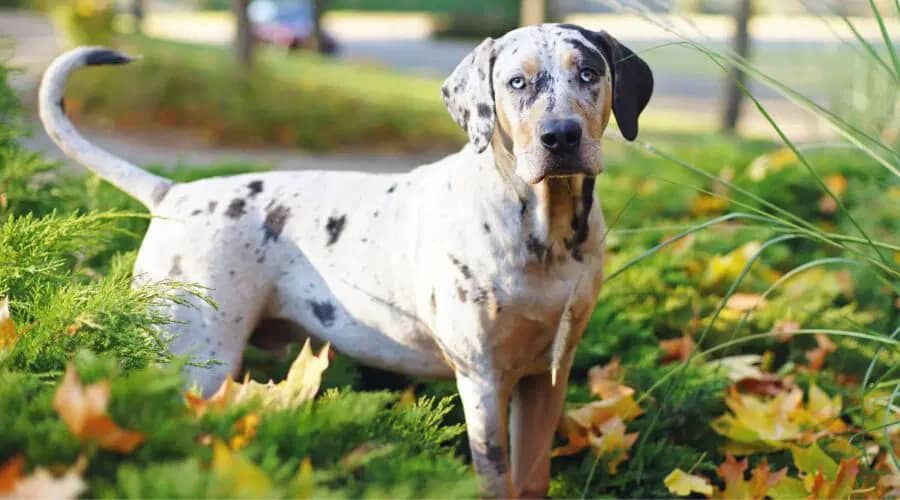
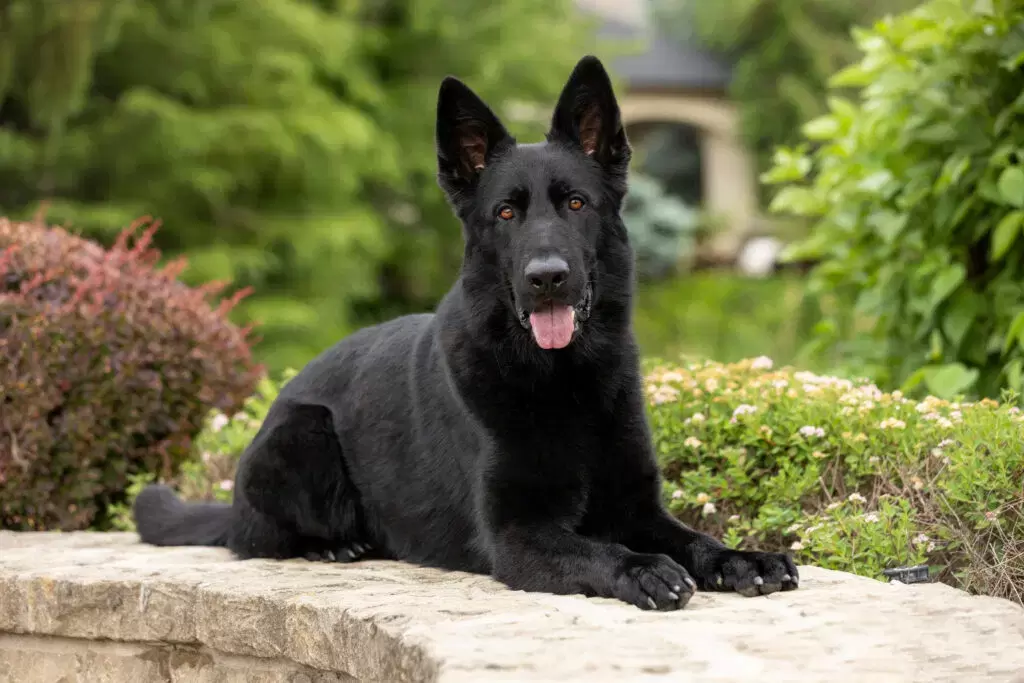

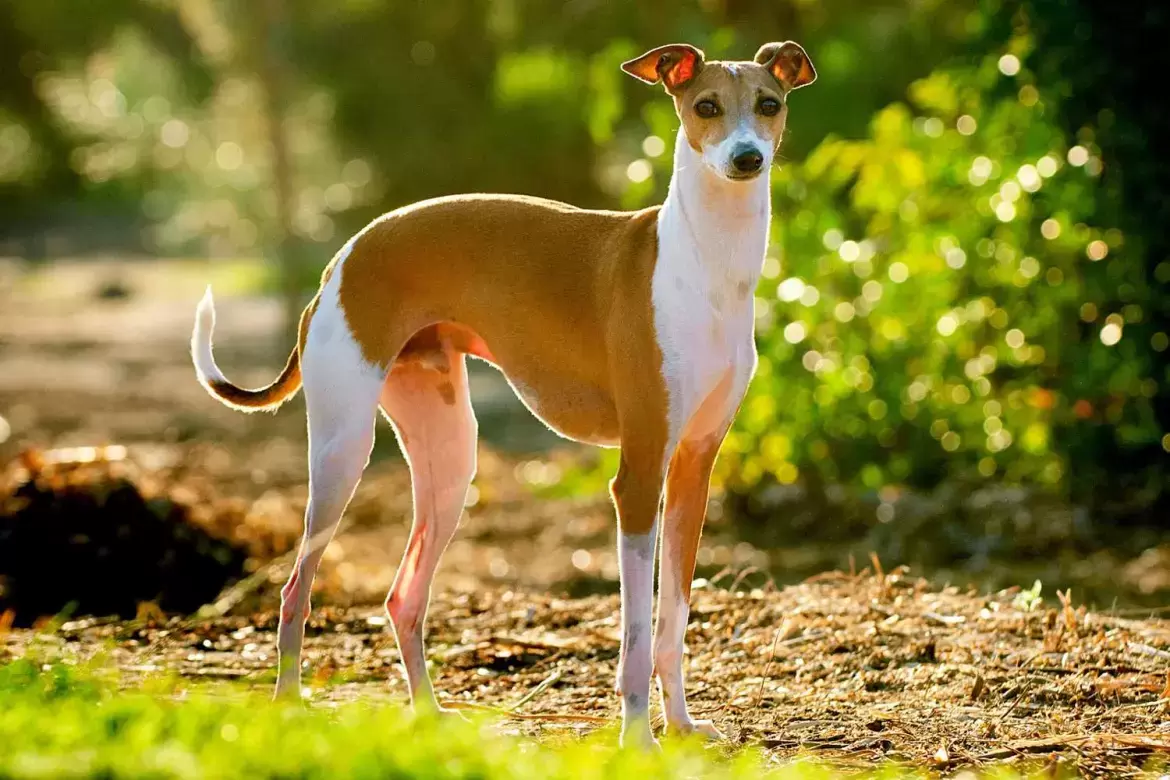
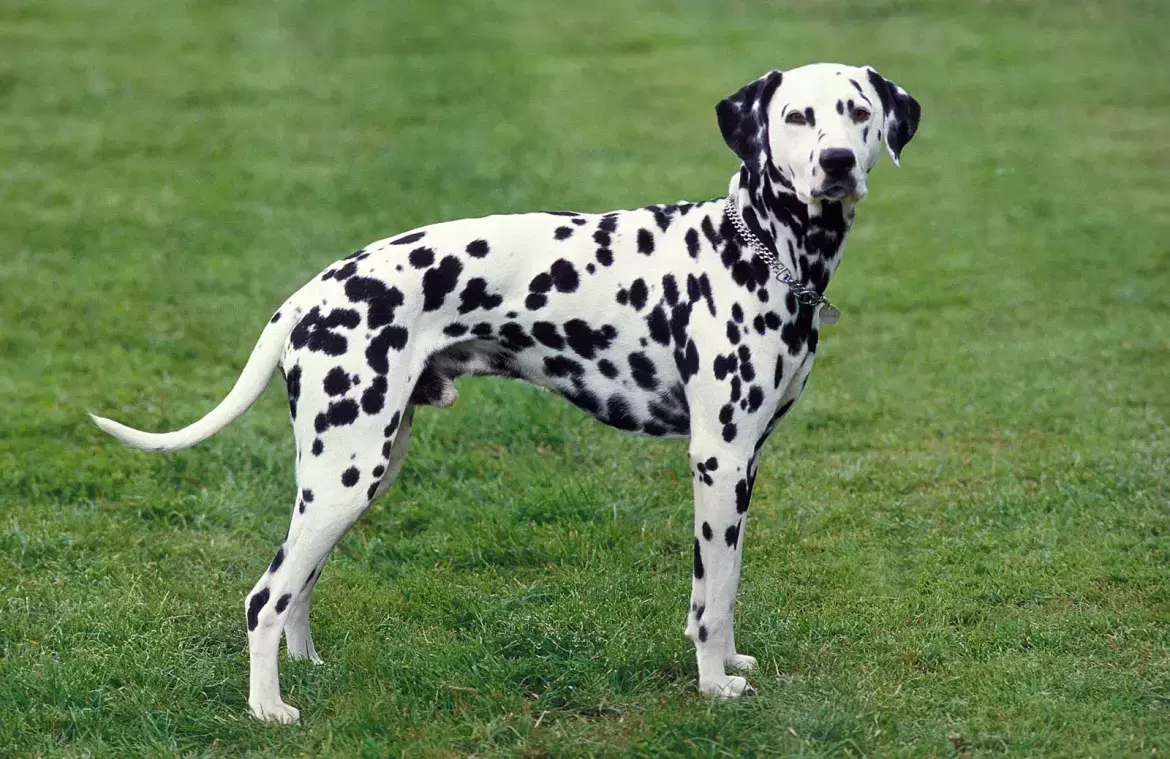
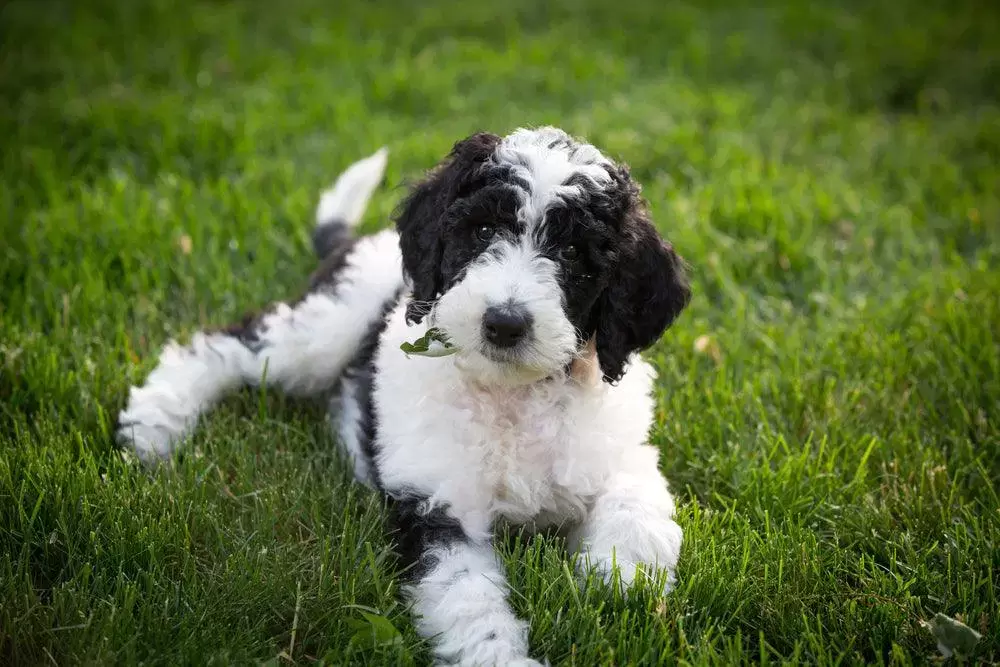
 RSS Feed
RSS Feed
